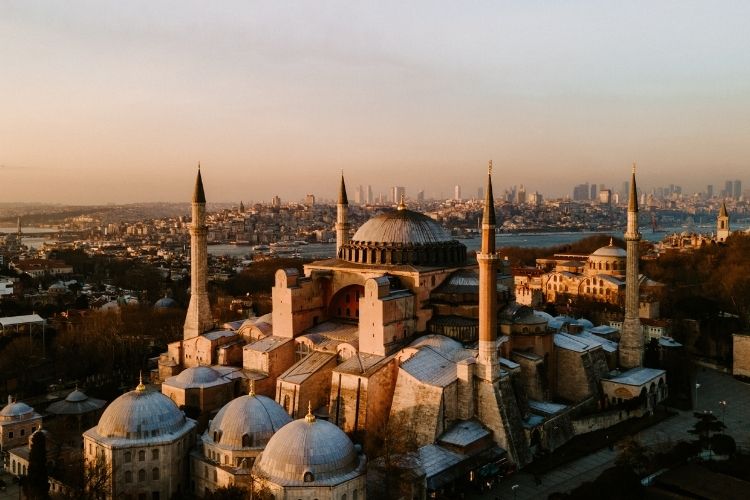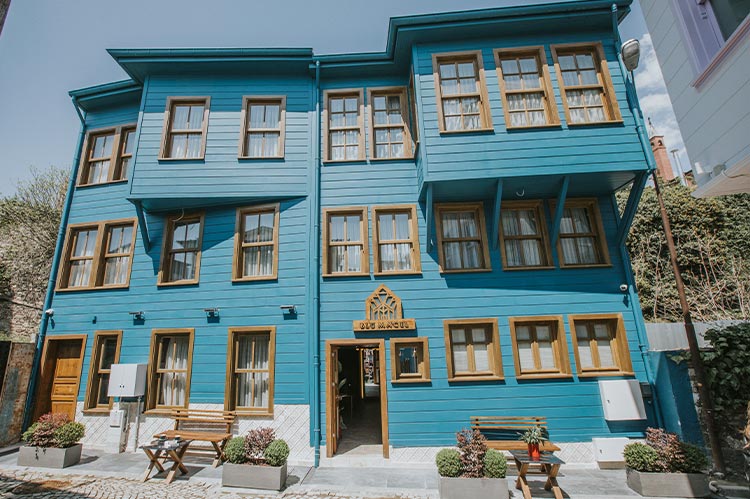
The Hagia Sophia, located in the heart of Istanbul, stands as one of the most magnificent architectural marvels of all time. This iconic structure has witnessed the rise and fall of empires, serving as a symbol of cultural, religious, and political transformations over the centuries. Today, it remains a symbol of Istanbul's rich history and continues to captivate millions of visitors from around the globe.
The Early Beginnings of Hagia Sophia
The history of Hagia Sophia dates back to the 4th century AD when Emperor Constantine I commissioned a basilica on the same site. However, this early version of Hagia Sophia was destroyed by fire during a riot. The church was then rebuilt under the reign of Emperor Theodosius II, but once again, it faced destruction during the Nika riots in 532 AD.
Following these events, Emperor Justinian I decided to create a new, grander version of Hagia Sophia that would surpass all existing religious buildings of its time. With this goal in mind, he commissioned Isidore of Miletus and Anthemius of Tralles, two renowned architects, to design and construct what would become one of the world's most celebrated landmarks.
Hagia Sophia: A Masterpiece of Byzantine Architecture
Completed in 537 AD, Hagia Sophia became the largest cathedral in the world at that time and remained so for almost a thousand years. Its stunning dome, measuring 32 meters in diameter, was an engineering feat that left visitors in awe. The building's interior was equally breathtaking, adorned with intricate mosaics, marble pillars, and lavish decorations, showcasing the grandeur of the Byzantine Empire.
The architectural style of Hagia Sophia represented a perfect blend of classical Roman techniques and innovative Byzantine elements. Its central dome, supported by pendentives, allowed for a vast open space, creating a sense of heavenly light and majesty. The mosaics, depicting Christ, the Virgin Mary, and various saints, contributed to its spiritual significance, making it a sacred place of worship.
The Transformation into a Mosque
The fall of Constantinople in 1453 marked a new chapter in Hagia Sophia's history. When Sultan Mehmed II conquered the city, he ordered that Hagia Sophia be converted into a mosque. This transformation led to the addition of Islamic features, including minarets, a mihrab, and a minbar. The original Christian mosaics were plastered over, but fortunately, many of them were preserved and later restored in the 20th century.
For nearly 500 years, Hagia Sophia served as one of the most important mosques in the Ottoman Empire. It stood as a symbol of Islamic power and a testament to the empire's cultural achievements. During this period, additional architectural features, such as the calligraphy panels and the stunning chandeliers, were added, further enhancing the building's grandeur.
Hagia Sophia in the Modern Era
In 1935, following the establishment of the Turkish Republic, Hagia Sophia underwent another transformation, this time into a museum. The secularization of the building was part of Mustafa Kemal Atatürk's vision for a modern, progressive Turkey. As a museum, Hagia Sophia attracted millions of visitors from around the world, eager to explore its rich history and unique architectural blend of Byzantine and Ottoman styles.
During this period, extensive restoration work was carried out, revealing many of the hidden Christian mosaics. The balance between Islamic and Christian elements within Hagia Sophia made it a symbol of cultural and religious coexistence, further solidifying its place as a global landmark.
The Recent Return to a Mosque
In 2020, Hagia Sophia was officially reconverted into a mosque. This decision sparked global debates, with many viewing it as a significant cultural and political shift. Despite the change, the building remains open to visitors, and its historical significance endures.
The history of Hagia Sophia continues to evolve, reflecting the complex layers of religious, cultural, and political dynamics that have shaped Istanbul. Whether as a church, a mosque, or a museum, Hagia Sophia has always been a focal point of historical significance, drawing people from all walks of life to experience its awe-inspiring presence.
Hagia Sophia’s Enduring Legacy
Today, Hagia Sophia stands as a testament to the resilience of history. It has witnessed the rise and fall of empires, survived conquests, and undergone numerous transformations. Its rich past is a reflection of Istanbul itself—a city where East meets West, and where diverse cultures have left their mark.
For those interested in exploring the history of Hagia Sophia, a visit to this architectural wonder is an unforgettable journey through time. Its significance, both religious and cultural, ensures that Hagia Sophia will remain a timeless icon for generations to come.







